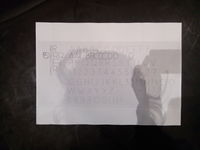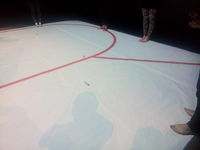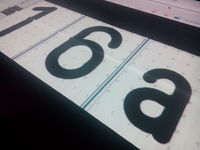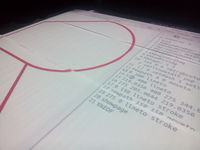OSPworkshop: Difference between revisions
No edit summary |
No edit summary |
||
| Line 35: | Line 35: | ||
[[File: | [[File:2015-10-25_14.58.26.jpg.jpg|200px|thumb|left|alt text]] | ||
[[File:2015-10-25_17.46.04.jpg|200px|thumb|left|alt text]] | [[File:2015-10-25_17.46.04.jpg|200px|thumb|left|alt text]] | ||
Revision as of 21:31, 28 October 2015
This distinction between the abstract mathematical formulation of geometric shapes, and their realization into concrete, physical forms.
•• Defining Shapes
The first signs left by man were the prints of their foot steps in sand and soft soil. The first signs consciously created by man were probably written with the index finger or a stick in the sand, then later carved in wax, wood and stone which would finally preserve the traces for centuries. The foot would leave a complete shape with one print, making it the ancestor of today’s often used outline approach. The finger however, would create a thick line that would follow its movement making it the forerunner of the calligraphic approach. Later shapes would also be drawn from the outside what took more time but would also give new stylistic possibilities. So from the very beginning both approaches would coexist as calligraphy and punchcutting coexisted. Also found objects like stones would be used to create shapes and are today known as the mosaics or grid approach.
"I always felt like pixels are an approximation of reality, and vectors are a reconstruction. " Jürg Lehni at Compression by Abstraction: A Conversation About Vectors (http://rhizome.org/editorial/2013/jul/30/compression-abstraction/)
•• Metafont - Calligraphic or Skeleton Approach
Metafont allows diff erent kind of parametrical components to be used in a font.
How it works
• Originated from linear-drawing, writing and calligraphy where diff erent kinds of pens (pointed, broad-nib, ...) get applied to a skeleton resulting in diff erent kind of characters depending on the pen.
Example Programs
• Illustrator has many tools to make fonts with a bone structure (and all kind of other vector deformation), but there is no font export.
• Metafont uses formulas and parameters to change the bone structure.
• Calligrapher from Jürg Lehni and François Rappo.
• Kalliculator uses hand placed skeletons with a very sophisticated brush model.
at: http://christoph-knoth.com/shared/computed_type_-_christoph_knoth.pdf




